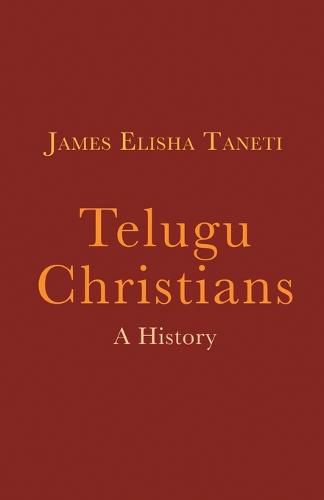Readings Newsletter
Become a Readings Member to make your shopping experience even easier.
Sign in or sign up for free!
You’re not far away from qualifying for FREE standard shipping within Australia
You’ve qualified for FREE standard shipping within Australia
The cart is loading…






This volume narrates the history of Telugu Christians, a faith community located in the states of Telangana, Andhra Pradesh, and Pondicherry in southern India. A social history of a faith community, this volume analyzes how social aspirations of the community, local worldviews, and historical contingencies shaped the beliefs and practices of Telugu Christians. It relates and interprets the history of Telugu Christians chronologically from the sixteenth century until the current times.
The first two chapters of the book examine the earliest encounters between the Christian message that European missionaries introduced and the local Christians. Covering three centuries, this section highlights the appropriation of the Christian message among the caste converts.
Later chapters analyze the impact of Dalit conversions and women’s leadership on the social fabric and theological texture of Telugu Christianity in the nineteenth and the early twentieth centuries.
The book ends with a consideration of three dominant movements in the second half of the twentieth century and the early twenty-first, namely the process of Sanskritization, the influences of Pentecostalism, and those of Holiness movements on the Telugu church. In conclusion, Taneti recaps how caste and empire shaped the faith and practices of Telugu Christians.
$9.00 standard shipping within Australia
FREE standard shipping within Australia for orders over $100.00
Express & International shipping calculated at checkout
This volume narrates the history of Telugu Christians, a faith community located in the states of Telangana, Andhra Pradesh, and Pondicherry in southern India. A social history of a faith community, this volume analyzes how social aspirations of the community, local worldviews, and historical contingencies shaped the beliefs and practices of Telugu Christians. It relates and interprets the history of Telugu Christians chronologically from the sixteenth century until the current times.
The first two chapters of the book examine the earliest encounters between the Christian message that European missionaries introduced and the local Christians. Covering three centuries, this section highlights the appropriation of the Christian message among the caste converts.
Later chapters analyze the impact of Dalit conversions and women’s leadership on the social fabric and theological texture of Telugu Christianity in the nineteenth and the early twentieth centuries.
The book ends with a consideration of three dominant movements in the second half of the twentieth century and the early twenty-first, namely the process of Sanskritization, the influences of Pentecostalism, and those of Holiness movements on the Telugu church. In conclusion, Taneti recaps how caste and empire shaped the faith and practices of Telugu Christians.